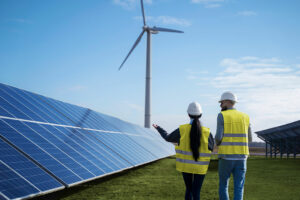By Justine Irish D. Tabile, Reporter
The Board of Investments (BoI) said that the government is already fine-tuning the details of the updated Strategic Investment Priority Plan (SIPP) 2025-2028, with hopes of releasing within the year the updated list of projects that will qualify for incentives.
At the Arangkada Forum on Friday, BoI Investment Promotions Services Executive Director Evariste M. Cagatan said that the goal is to release the new SIPP within the year.
“It is being finalized … The target is to submit to the Office of the President in the fourth quarter,” she added.
On Friday, Ms. Cagatan presented the proposed list of projects that will be included in the new SIPP.
“So, under Tier 1, we see industries that address modern basic needs. It also covers sustainability-driven industries, export activities, and those covered by special laws,” said Ms. Cagatan.
“Meanwhile, Tier 2 includes goods and services not locally produced and import-substituting activities, while Tier 3 covers highly strategic and innovation-driven activities,” she added.
Under modern basic needs, the list includes agriculture, fishery and forestry, manufacturing, halal, kosher, and organic-related activities, services, healthcare and disaster risk reduction management services, infrastructure and logistics, and energy.
Meanwhile, sustainability-driven industries include industrial and hazardous waste treatment, bulk water treatment and supply, wastewater treatment, and environment- or climate change-related projects.
Ms. Cagatan said that the focus of the BoI is to ensure that the investment gains translate into long-term economic resilience.
“This means not only attracting capital but also creating an enabling environment where innovation thrives, industries move up the value chain, and opportunities are inclusive and sustainable,” she said.
Citing the Foreign Investment Promotion and Marketing Plan (FIPMP), Ms. Cagatan said that the BoI has identified key growth sectors to drive long-term growth.
These are green metals and mineral processing, smart manufacturing, smart agro-industries, renewable energy (RE) value chain, electric vehicle ecosystem, semiconductors and electronics, digital and telco infrastructure, information technology and business process management (IT-BPM), and creatives.
Under the FIPMP, the government hopes to increase foreign direct investment by 5%, with an additional percentage point of growth expected annually until 2028.
“With our geostrategic location in the Indo-Pacific, an abundance of critical natural minerals and agricultural resources, and a young, adaptable, and tech-savvy workforce and a large consumer base fueled by a rising middle class, the Philippines is well-positioned to be the location of choice for these high-value industries,” she said.
Over the last three years, the official said that the Philippines’ FDI performance has remained steady, with FDI net inflows reaching about $9 billion in 2024.
“In 2024, FDIs were from foreigners such as Japan, the UK, Singapore, and the United States. And for the first semester of 2025, total net inflows reached $3.4 billion, reflecting sustained investor confidence despite global headwinds,” she said.
She also mentioned that the investment promotion agencies reported a very healthy pipeline of incoming investments, which reached P1.95 trillion last year, marking a 32.7% increase from 2023.
“This year looks promising as well, with the first half of 2025 investment approvals reaching more than P480 billion for projects in RE, manufacturing, real estate, transport, and IT-BPM,” she said.
“These projects are expected to generate about 70,000 jobs. And foreign investments made up 20% with inflows from Singapore, South Korea, the US, China, and Japan,” she added.

